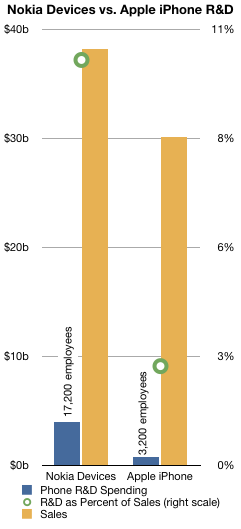In the recent series of exposés on Nokia’s new strategy I sought to paint a background for what caused such a dramatic decision:
- A history of previous Microsoft “strategic alliances” in mobile brought Microsoft to a level of desperation
- The question of how many horses are in the race coupled with operator feedback on what matters to them in terms of balance of supplier power
- The installed base of Symbian although great is fragile
- A confused tablet strategy from both partners.
- The impact of pricing on addressable market and share
- The “Osborne effect” on Symbian and how the transition could be impossible to navigate
This gives a backdrop to the decision, but it does not explain the most crucial part of the decision: why did Stephen Elop decide to maintain an exclusive platform for Nokia rather than a multi-platform approach as chosen by successful competitors such as HTC, Samsung and Sony Ericsson. Continue reading “Nokia's Burning Ships strategy”


